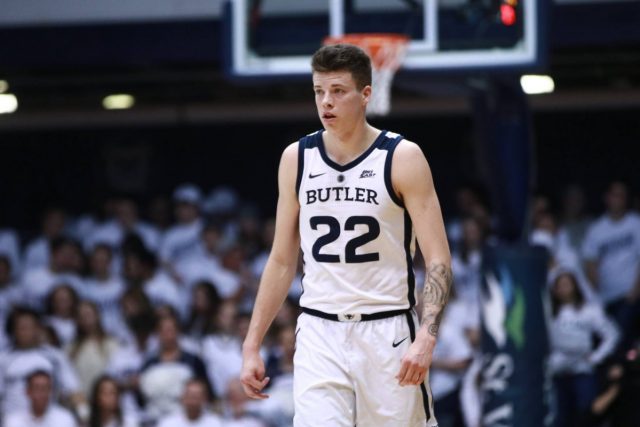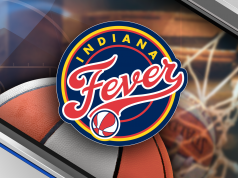The 2019-2020 season for Butler men’s basketball saw them reach their highest ranking in program history, at #5 in the nation. I, like most in the Butler community, understood the importance of this achievement.
Achieving such a status demonstrated that the Bulldogs could hang in with some of the best teams in the nation. Butler started off the season with a 16-1 record with the lone loss coming on the road at Baylor, who would later finish the season at #5 in the AP Top 25 Poll with an impressive 26-4 record. The Bulldogs would finish 22-9, an improvement from the last two seasons.
The same week in which this game took place, Indiana University had lost by 20 points on the road to then unranked Wisconsin, followed up by a close win over UConn 57-54. Following these games, the season got rocky for the Hoosiers and they finished 10th in the Big Ten with a 20-12 record overall (9-11 in conference). At season’s end there was uncertainty as to IU’s ability to find a place in the NCAA Tournament.
Purdue was sporadic all season. They could defeat top competition like #5 Virginia by 29 points but could never string together more than three wins in a row. They finished 16-15 this season.
So, Butler is clearly the best team of the three. There’s hardly any doubt. I’ll give credit to the Big Ten conference for being absolutely ruthless this year with the competitiveness of the programs.
I bring this up because over the last season I witnessed games in each of the team’s respected home venues – Hinkle Fieldhouse, Skjodt Assembly Hall, and Mackey Arena. At each of the games I attended, I had access to the media room before and after games. I took note of the people present, who they worked for, and what they were doing.
There was a clear difference between the environments, and it wasn’t solely the size of the room or the quality of the press conference. Purdue and Indiana just simply had more people. A lot more. So much more that it made me a bit upset to see how unfairly the Bulldogs were being treated when it came to media exposure.
I understand that since Purdue and IU are both large state schools, more people are interested in them. For the Hoosiers specifically, there’s a long history of pride and success that goes along with the program. In a season where the legendary Bob Knight made stepped foot on home court for the first time in two decades, naturally the team would get much more coverage on a regional and national scale.
Still, the busiest I had seen the Butler media room was on February 1st against Providence following a pair of wins including an overtime thriller against Marquette. Unfortunately, the Bulldogs would not have many great stories leaving Hinkle that evening as they lost to the Friars 66-61.
In the room I noticed the number of cameras, newspaper journalists, online column writers. I counted at least three dozen people in that room. This was about average at both Indiana and Purdue games. Any other week, Butler was lucky to have two cameras and maybe a dozen writers present.
I investigated the coverage each of the three schools were receiving over the duration of the season. How media approached each team affected how others would look into the programs. Below is a chart representing the interest in each school via news searches over the duration of the last season according to Google Trends. (Blue = IU, Red = Butler, Yellow = Purdue)
It’s evident from the graph that Butler was only getting widespread attention in searches at points in the season where they played top tier opponents. Their popularity reached its peak when they hit #5 in the AP Poll and would spike at various points during Big East play.
As for Purdue and Indiana, they were getting the same attention practically every week, especially so at season’s end when Bracketologists were trying to determine who could make the tournament.
This is evident by the coverage each school was receiving. The more stories that were published on the team, the easier it was for people to access the information. Furthermore, web-goers are more likely to come across the articles posted on a specific team based upon how many sources are sending out stories.
When searches were analyzed geographically, its no surprise that IU was the favorite in terms of coverage. The Hoosiers were the focal point in 60 percent of news searches, followed by Purdue at 33, and the Bulldogs with a measly 7 percent.
If we were to broaden this out into web searches in general, we see an even more distanced chart.
At no point during the last season did Butler exceed the amount of attention IU and Purdue were getting. This is alarming for a team that performed so well statistically. Butler ranked 32nd nationally in Fewest Turnovers, 22nd in Defensive Field Goal Percentage, and 11th in Scoring Defense. The Bulldogs were a sound team who were a threat on defense and had one of the best players in the country in Kamar Baldwin.
Fortunately, Butler has achieved its best recruiting class in program history for the coming 2020-21 season. This should have an impact on their ability to gain more national exposure. Additionally, they will being playing alongside opponents like Oregon and Notre Dame in the Maui Invitational next season.
Butler’s little brother status in Indiana likely stems to their status as a small private school. Their ability to perform in highly competitive environments is key to their ability to gain recruits and, perhaps more importantly, students in general. The national championship runs of the early 2010s launched Butler to the forefront of basketball discussion. To stay among the top in the country, or even the state, they need to maintain that same competitive drive.












